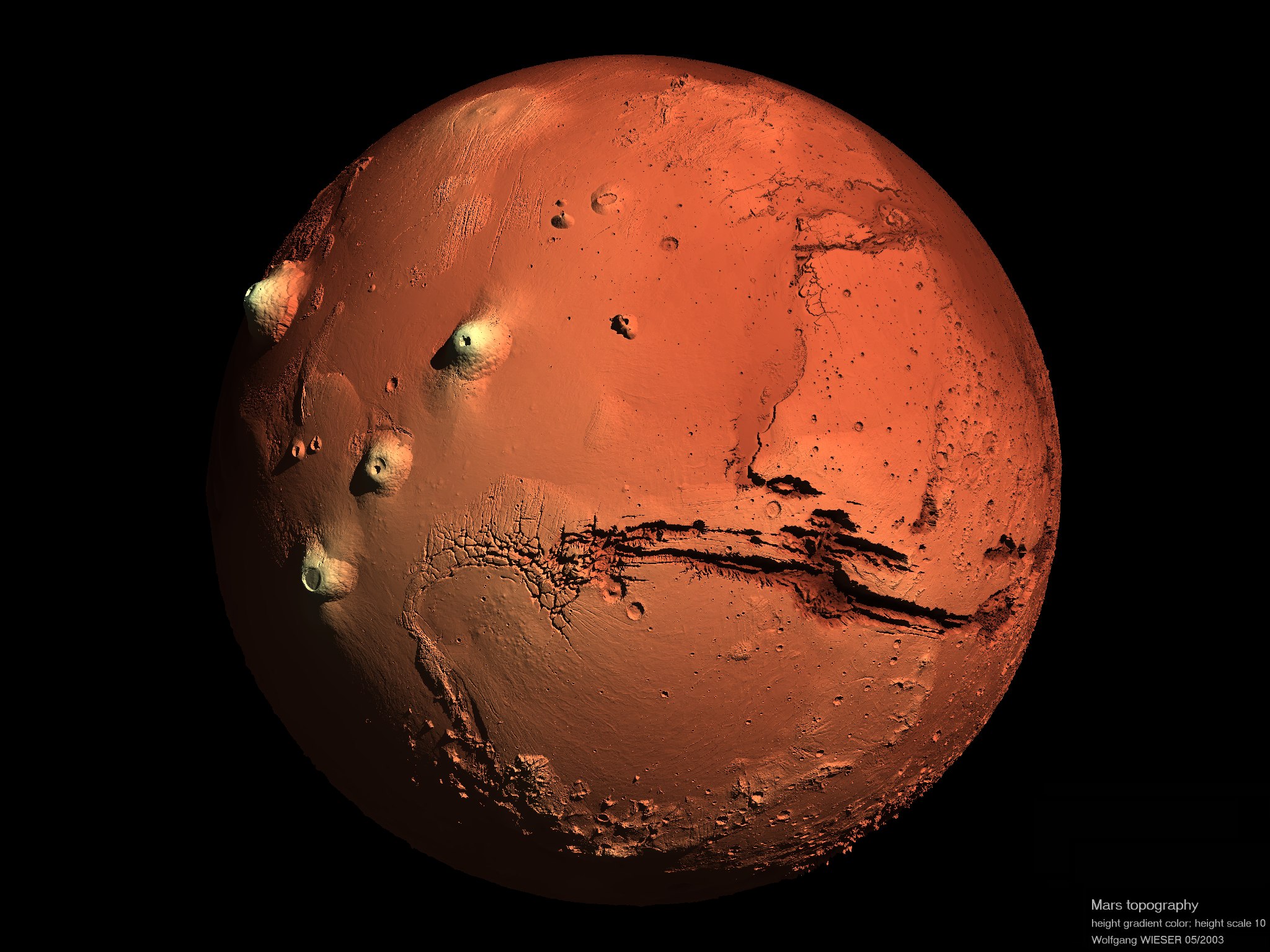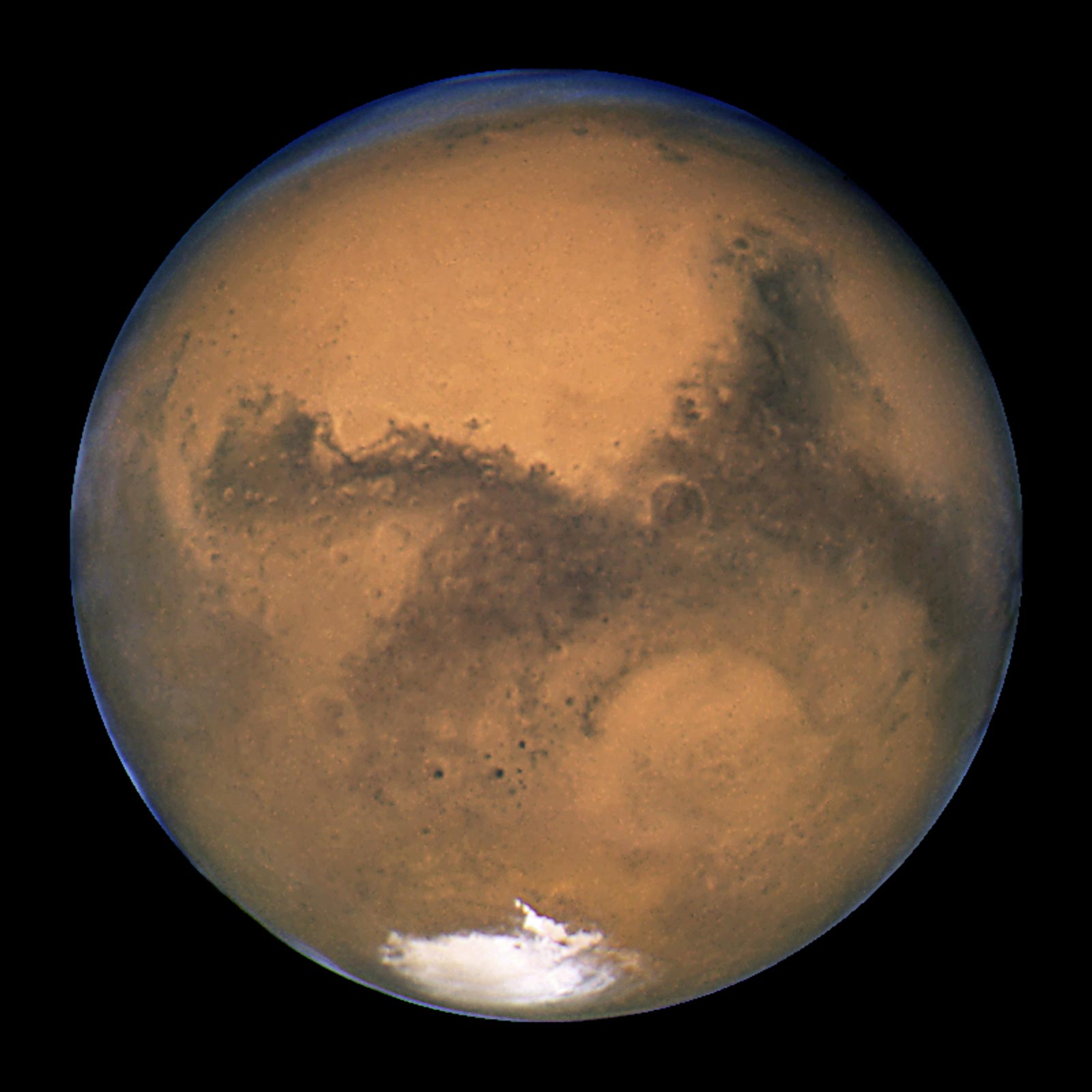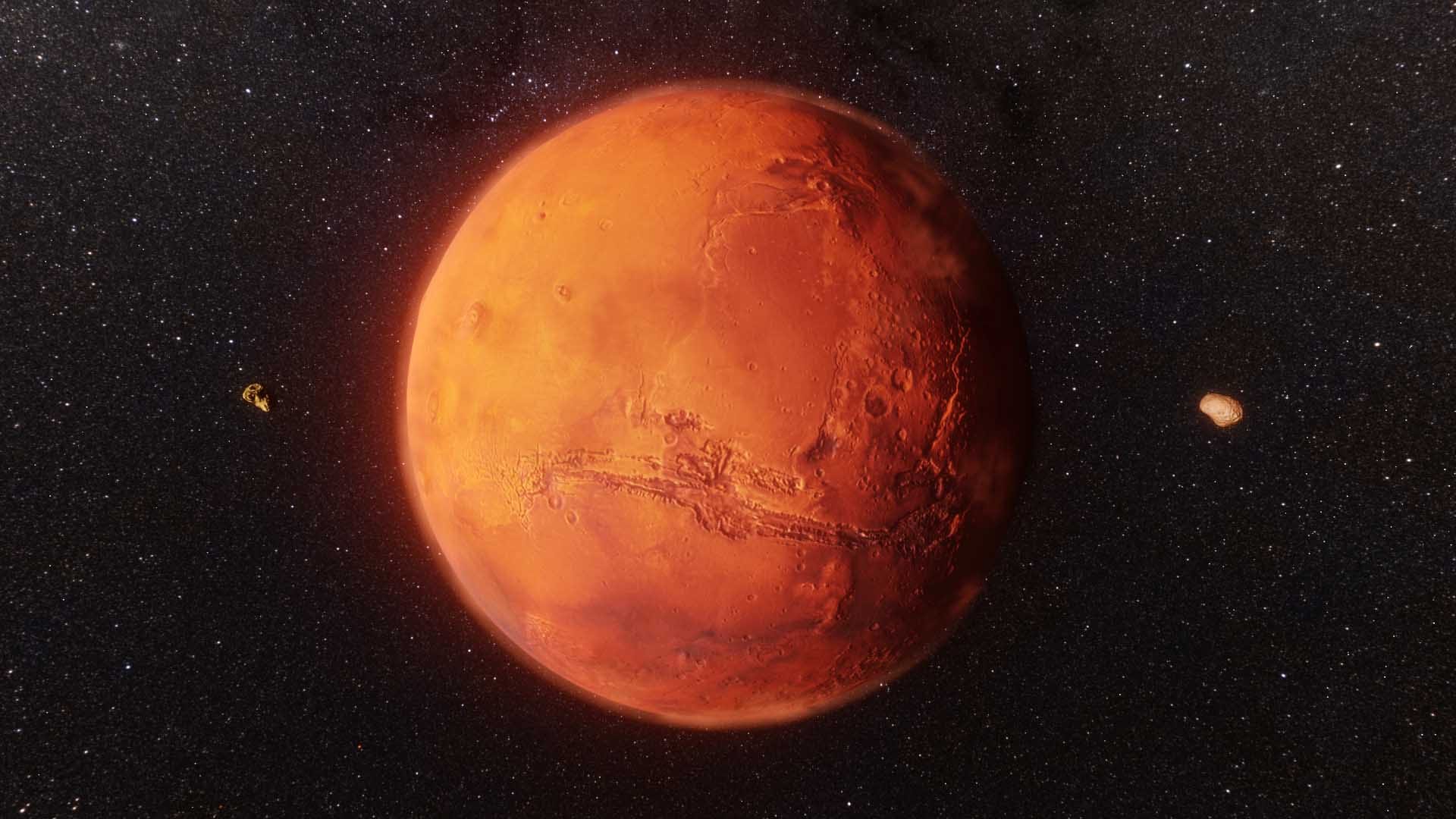Have you ever looked up at the night sky, maybe on a clear evening, and wondered about the other worlds out there? It’s a pretty amazing thought, isn’t it? When we talk about Mars opp Pluto, we’re really getting into some fascinating ideas about our solar system's diverse family of planets and dwarf planets. This isn't just about two names in space; it’s about their unique stories, what makes them tick, and how they stand apart. So, you know, it’s a big topic with lots to think about.
Mars, our closest planetary neighbor along with Venus, has truly captured human imagination for a very long time. It’s that conspicuous reddish object we often spot, sometimes called the Red Planet because of the rusty iron on its ground. For more than sixty years, NASA has been working hard to find answers to a huge question: Was Mars ever, or is it still, a place where life could exist? This quest has really shaped how we see this dynamic world.
Then there's Pluto, way out there, a different kind of world entirely. While Mars has been a constant focus for probes and missions, giving us a ton of information, Pluto remains a much more distant, icy mystery. Thinking about Mars opp Pluto lets us consider the incredible variety of cosmic bodies around us, from the relatively close, intensely studied Mars to the far-off, enigmatic Pluto. It's almost like comparing two very different characters in a grand space story.
Table of Contents
- Mars: Our Rusty Neighbor
- Pluto: A Distant, Icy World
- Mars vs. Pluto: Two Distinct Cosmic Tales
- The Future of Our Cosmic Neighbors
- Frequently Asked Questions About Mars
- Conclusion
Mars: Our Rusty Neighbor
Mars, the fourth planet from the sun, holds a special place in our solar system, you know. It's the seventh in terms of size and mass, which makes it smaller than Earth but still a significant celestial body. For ages, this red planet, named for the Roman god of war, has appeared as an omen in the night sky. Its very rusty red surface, in a way, tells a tale of past destruction, hinting at processes that shaped it billions of years ago. About 4.5 billion years ago, a giant cloud of interstellar gas and dust came together under its own pull, flattening into the solar system we see today, and Mars was born right along with the other planets.
A Dynamic World of Seasons and Canyons
This dynamic planet, Mars, is quite similar to Earth in some really surprising ways. It has seasons, for instance, which means its climate changes throughout its year, just like ours. You'll find polar ice caps there, too, much like Earth's poles, though they are mostly made of frozen carbon dioxide and water ice. The planet also features extinct volcanoes, some of them truly enormous, showing a fiery past. And then there are the canyons, vast geological features that carve across its surface, giving us clues about its ancient history with water, or so it seems.
The thin atmosphere on Mars is a key part of its story, influencing its weather patterns and how its surface appears. This thinness means that while it has weather, it’s a very different kind of weather than what we experience here on Earth. The presence of these features – seasons, ice caps, volcanoes, canyons, and weather – makes Mars a truly fascinating subject for scientific study, really.
A Hub of Exploration Since 1997
For decades, Mars has been a focal point for space exploration. Probes have been active on Mars continuously since 1997, which is a pretty long stretch of time. At times, more than ten probes have simultaneously operated in orbit or on the surface, more than at any other planet beside Earth. This continuous presence shows just how committed we are to learning about this world. These missions, whether they are orbiting high above or rolling across the dusty ground, send back a steady stream of information, helping us piece together the planet's past and present.
We get mission updates, spacecraft news, and science findings regularly, thanks to these dedicated efforts. This flow of unique Mars data helps us build a clearer picture of what this cold, desert world is really like. It’s a constant effort, you know, to keep these machines running and sending back their observations from so far away.
The Quest for Habitability
One of the biggest questions in science, which NASA has pursued for more than sixty years, is whether Mars was, or is, a habitable world. This question is really at the heart of much of the exploration. The key to understanding the past and present conditions on Mars lies in studying its geology, its atmosphere, and any signs of water that might have once existed. The rusty iron in the ground, for instance, tells us about the presence of oxygen and water in its history, which are elements crucial for life as we know it.
Scientists are always looking for clues, trying to figure out if Mars once had a warmer, wetter past that could have supported living things. The very nature of its surface, showing signs of ancient rivers and lakes, gives us hope. This search for habitability is a long-term project, truly, and every piece of data from the probes helps us get a little closer to an answer.
Pluto: A Distant, Icy World
Now, let’s shift our gaze a bit, way out to the colder, darker reaches of our solar system, to Pluto. Unlike Mars, which is relatively close and often quite visible, Pluto is a world of extreme distance and cold. It’s a dwarf planet, way beyond the orbit of Neptune, and it’s a very different kind of celestial body. While Mars is known for its reddish, dusty surface and signs of ancient water, Pluto is characterized by its icy composition and incredibly frigid temperatures. It's a world that has only recently been visited by a spacecraft, offering us our first close-up look at its heart-shaped glacier and towering mountains of ice.
Pluto's journey around the sun is much longer than Mars's, taking hundreds of Earth years to complete just one orbit. This vast distance means it receives very little sunlight, making it a truly dark and frozen place. Its thin atmosphere is mostly nitrogen, and it can actually freeze and fall to the surface as snow when Pluto moves further from the sun. So, you can see, it's a stark contrast to the comparatively warmer, more dynamic Mars.
Mars vs. Pluto: Two Distinct Cosmic Tales
When we think about Mars opp Pluto, it’s really about comparing two incredibly different cosmic stories. Mars, a rocky, rusty neighbor, has been a constant subject of intense study and ambitious missions. Pluto, on the other hand, is a distant, icy dwarf planet, only recently glimpsed up close. These differences highlight the amazing variety within our own solar system, offering different challenges and opportunities for exploration and scientific discovery. It’s like they represent two ends of a spectrum, almost.
Proximity and Visibility: Mars's Advantage
Mars is one of Earth's two closest planetary neighbors, the other being Venus. This proximity makes Mars one of the easiest planets to spot in the night sky. Its periodic conspicuous reddish appearance has fascinated sky-watchers for millennia. Being relatively close also means that sending probes and spacecraft to Mars is a much more feasible endeavor. The journey takes months, not years or decades, making it a prime target for continuous exploration.
Pluto, however, is incredibly far away. Its distance makes it invisible to the naked eye and a challenge even for powerful telescopes. It took nearly a decade for the New Horizons spacecraft to reach Pluto, highlighting the immense distances involved in exploring the outer solar system. This difference in closeness fundamentally shapes our ability to study and understand these two worlds, you know.
Active Exploration vs. Distant Glimpses
The contrast in exploration efforts between Mars and Pluto is quite striking. As we mentioned, probes have been active on Mars continuously since 1997. At times, more than ten probes have simultaneously operated there, a number unmatched by any other planet besides Earth. This sustained presence has given us an incredible wealth of data about Mars’s surface, atmosphere, and potential for past life. We have rovers driving across its plains, taking pictures, drilling samples, and listening to its winds. It’s a very hands-on approach, really.
Pluto, by comparison, has only had one close-up visit from a spacecraft, New Horizons, in 2015. This flyby provided breathtaking images and invaluable data, but it was a fleeting encounter. There are no active probes orbiting Pluto or exploring its surface. The sheer distance and the technological challenges make continuous, multi-probe exploration of Pluto a much more distant prospect. So, in some respects, our knowledge of Mars is incredibly deep, while our understanding of Pluto is still just beginning.
The Red Planet's Warmth vs. Pluto's Deep Freeze
The environments of Mars and Pluto are also vastly different. Mars, while a cold desert world, experiences seasons and has polar ice caps. Its temperatures can sometimes rise above freezing at the equator in summer, allowing for the possibility of liquid water, even if only briefly. The presence of extinct volcanoes and canyons suggests a more geologically active past, perhaps with a thicker atmosphere and flowing water. It’s a place that, in a way, feels a bit more familiar, a little more like Earth’s distant cousin.
Pluto, on the other hand, exists in a state of deep freeze. Its surface temperatures hover around -229 degrees Celsius (-380 degrees Fahrenheit), making it incredibly inhospitable to life as we know it. Its atmosphere is extremely thin and can even freeze out onto the surface. The landscape is dominated by nitrogen ice plains and mountains of water ice, a testament to its frigid conditions. There are no signs of past liquid water or significant geological activity driven by internal heat in the same way Mars shows. This difference in temperature and composition is, you know, a pretty fundamental distinction between the two.
The Future of Our Cosmic Neighbors
The exploration of Mars continues with incredible momentum. New missions are planned, aiming to bring back samples of Martian soil to Earth for detailed study, which is a very exciting prospect. The long-term goal for Mars is to understand its potential for life, both past and present, and perhaps, one day, to send humans to walk on its rusty surface. This ongoing effort, supported by the continuous activity of probes since 1997, keeps Mars at the forefront of space news. We bring you mission updates and science findings, you know, constantly.
For Pluto, the future of exploration is less immediate but still promising. Scientists continue to analyze the data from the New Horizons flyby, revealing more secrets about this distant world. Future missions might involve orbiters or even landers, though these are far off. The study of Pluto and other dwarf planets in the Kuiper Belt helps us understand the formation of our solar system and the diversity of worlds at its farthest reaches. Both Mars and Pluto, in their own distinct ways, continue to inspire awe and curiosity about the vastness beyond our home planet. Learn more about Mars exploration on our site, and link to this page for more about the solar system's planets.
Frequently Asked Questions About Mars
Here are some common questions people often ask about Mars, you know, to help clear things up.
Is Mars the only planet with seasons like Earth?
Actually, Mars does have seasons, much like Earth, because its axis is tilted. This tilt causes different parts of the planet to receive more direct sunlight at different times of its year. However, other planets in our solar system, such as Saturn and Neptune, also have seasons, though they are much longer and more extreme than those on Earth or Mars, given their distance from the sun. So, Mars isn't the only one, but its seasons are perhaps the most Earth-like among the easily observable planets.
Why is Mars called the Red Planet?
Mars gets its famous nickname, the Red Planet, because of the rusty iron in its ground. The surface of Mars is covered in iron oxide, which is essentially rust. This compound gives the planet its distinct reddish-orange hue, which is quite visible from Earth. It’s a pretty simple explanation for such a striking color, really.
How long have probes been on Mars?
Probes have been continuously active on Mars since 1997. This means that for over two decades, there has been at least one, and often many more, spacecraft either orbiting Mars or operating on its surface. This long-term, uninterrupted presence has allowed us to gather an incredible amount of data and make significant discoveries about the planet. It’s a sustained effort, truly, showing our dedication to understanding this neighbor.
Conclusion
Considering Mars opp Pluto really highlights the vast diversity of our solar system. Mars, our relatively close, rusty neighbor, has been a hub of continuous exploration since 1997, with numerous probes actively seeking answers to whether it was, or is, a habitable world. Its dynamic features, like seasons, polar ice caps, and canyons, make it a fascinating object of study, a planet that, you know, still holds many secrets.
Pluto, in sharp contrast, remains a distant, icy world, glimpsed only once up close by a spacecraft. Its extreme cold and immense distance present entirely different challenges for exploration. These two celestial bodies, Mars and Pluto, offer distinct cosmic tales, from their proximity to Earth to the intensity of their exploration and their very different environments. As we continue to look to the stars, staying curious about these worlds helps us appreciate the incredible wonders that fill our universe. You can learn even more about space exploration by visiting the NASA website.



Detail Author:
- Name : Dr. Reynold Monahan V
- Username : alfonzo91
- Email : reinhold.johns@jerde.com
- Birthdate : 1975-07-10
- Address : 90028 Gertrude Mission Apt. 517 South Lottie, OH 06472
- Phone : 1-475-394-9465
- Company : Heidenreich LLC
- Job : Petroleum Pump System Operator
- Bio : Qui delectus nihil ea. Aut dolore facere deleniti ad animi et quae. Ullam perspiciatis sit sed rerum dolore id. Molestias ut dolor eius officia error.
Socials
facebook:
- url : https://facebook.com/rodger_xx
- username : rodger_xx
- bio : Voluptas numquam illo aut eaque.
- followers : 4113
- following : 463
linkedin:
- url : https://linkedin.com/in/runolfsdottir1979
- username : runolfsdottir1979
- bio : Quia rerum non itaque iste impedit odio.
- followers : 4599
- following : 2474